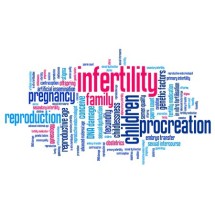
Trying to get pregnant may not be easy for some. If you are both trying for one, before timing when to have sex, it is important to understand the fertile window first. The chances of having your egg fertilised by the sperm is impossible when your wife is not ovulating. Therefore, understanding ovulation and the fertile window is critical in increasing the chances of getting pregnant.
Let’s understand the basics of ovulation and what you can do ~
Ovulation
Every month, there are around over ten eggs inside your ovaries and the most mature egg will be released and swept into one of your fallopian tubes toward the uterus (“ovulation”). The egg and the sperm has to meet in the fallopian tube but there is a timing to it as the egg cannot survive longer than 1 to 2 days after ovulation. However, the sperm can survive for up to six days and therefore, you can have sex a few days before ovulation (i.e. not necessary to have sex only on the ovulation day itself). This window is known as the fertile window of six days, comprising five days before ovulation day and the ovulation day itself. The likelihood of pregnancy is higher when intercourse is from three days immediately preceding and including the ovulation day.
How do I know when is ovulation?
You can work out your ovulation and fertile window from the length of your menstrual cycle. Typically, ovulation occurs about two weeks before the start of the period. The first day of your period is counted as day one and say your menstrual cycle is 28 days, your fertile window is from day 12 to 17. If you have a longer menstrual cycle of 35 days, your fertile window is from day 19 to 24. It is harder to count if your menstrual cycle is irregular and ovulation may be a week earlier or later from month to month. It is then helpful to know the signs of ovulation.

Signs of ovulation
During ovulation, there are changes in your body, for instance:
• Rising level of the hormone oestrogen closer to ovulation gives rise to cervical mucus change that is clear and slippery (similar to egg white); the mucus has the function of facilitating the travel of sperm towards the fallopian tube
• Mild ache or pain in lower abdomen, known as the condition mittelschmerz; take note if such sensation occurs at the same time of your menstrual cycle
• Increase in sex drive; this one is more tricky, but some women feel more attractive during the fertile window
• Breast tenderness
You can also record your basal body temperature (“BBT”) first thing in the morning. Right after ovulation, your BBT will rise and charting BBT monthly will help you figure out when your ovulation is (that is, before the rise in BBT).
Alternatives of checking ovulation
Ovulation predictor kits are available to help figure out the rise in luteinizing hormone (in urine), which is highest just before ovulation. Test a few days before the estimate ovulation day, for instance for a 28-day menstrual cycle, you can start testing from day 11. A positive result means ovulation will be within the next 2 to 3 days. It is not full-proof though as certain conditions such as premature ovarian failure, luteinized enraptured follicle syndrome or perimenopause for women over the age of 40 can also lead to an increase in the luteinizing hormone without ovulation.
There is also the saliva test that measures the level of estrogen in the saliva, which increases closer to ovulation. Your saliva on the test kit stick observed with the test kit’s eyepiece will show a microscopic fern or frost pattern when there is higher estrogen level. There are also salt tests for sweat where a wristband worn can detect the increased level of chloride ion which happens around 4 days before ovulation.
Ovulation day is not exact science and varies from month to month and from woman to woman, and it can be any day from day 11 to day 21. Furthermore, it can get quite stressful for some couples as they try to time when to have sex. It will be better to have sex every two or three days, since the sperm live around 3 to 5 days after sex. You can also have daily intercourse during the time of ovulation and despite the drop in sperm concentration from frequent sex, the odds are still higher with more sex!
If both of you have been trying for a while and you are wondering why you are not pregnant yet? Read more on the conception facts and myths you need to know!
Written by Mei






